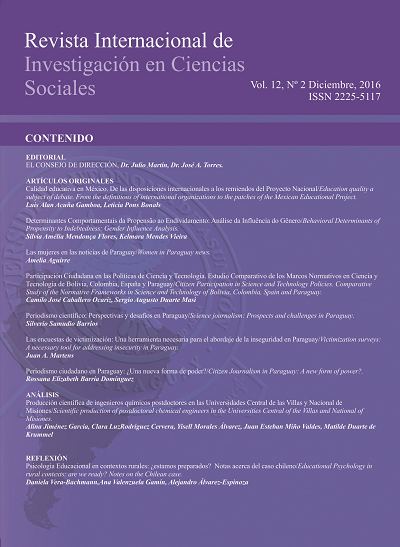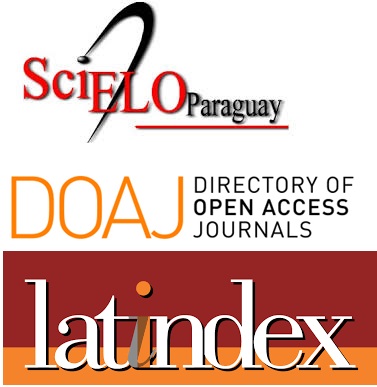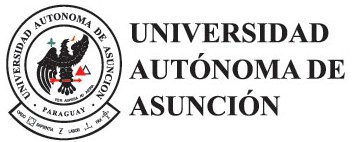Determinantes Comportamentais da Propensão ao Endividamento: Análise da Influência do Gênero
Palabras clave:
Fatores Comportamentais, Endividamento, GêneroResumen
O estudo analisou os determinantes comportamentais da propensão ao endividamento, avaliando as diferenças no gênero. Conforme a literatura, homens e mulheres diferem em suas decisões, sendo esses aspectos influenciados por questões psicológicas e comportamentais. Para compreender a propensão ao endividamento utilizou-se o modelo de Flores e Vieira (2014), que realizaram uma pesquisa no município de Santa Maria, Rio Grande do Sul, Brasil. A fim de avaliar o efeito do gênero no modelo integrado aplicou-se a análise multigrupo de invariância. Os resultados demonstraram que os homens tendem a maiores níveis de emoções, comportamento de risco e atribuem maior valor ao dinheiro.
Citas
Achtziger, A., Hubert, M., Kenning, P., Raab, G., & Reisch, L. (2015). Debt out of control: The links between self-control, compulsive buying, and real debts. Journal of Economic Psychology, 49, 141-149.
Arbuckle, J. L. (2011). IBM SPSS Amos 20 user’s guide. Amos Development, SPSS.
Baek, E., & Hong, G. S. (2004). Effects of family life-cycle stages on consumer debts. Journal of Family and Economic Issues, 25(3), 359-385.
Byrne, B. M. (2013). Structural equation modeling with AMOS: Basic concepts, applications, and programming. Routledge.
Browne, B. A., & Kaldenberg, D. O. (1997). Conceptualizing self-monitoring: Links to materialism and product involvement. Journal of Consumer Marketing, 14(1), 31-44.
Chapple, C. L., & Johnson, K. A. (2007). Gender differences in impulsivity.Youth Violence and Juvenile Justice, 5(3), 221-234.
Cheung, G. W., & Rensvold, R. B. (2002). Evaluating goodness-of-fit indexes for testing measurement invariance. Structural equation modeling, 9(2), 233-255.
Confederação Nacional do Comércio de Bens, Serviços e Turismo – CNC. Pesquisa Nacional de Endividamento e Inadimplência do Consumidor. Março de 2016. Disponível em: < http://www.cnc.org.br/sites/default/files/arquivos/release_peic_marco_2016.pdf>. Acesso em: 09 abr. 2016.
Davies, E., & Lea, S. E. (1995). Student attitudes to student debt. Journal of economic psychology, 16(4), 663-679.
Disney, R., & Gathergood, J. (2011). Financial literacy and indebtedness: new evidence for UK consumers. The University of Nottingham.
Faber, R. J., & O'guinn, T. C. (1992). A clinical screener for compulsive buying. Journal of consumer Research, 459-469.
Ferreira, S. E. N. (2013). Uma análise comportamental aos inquéritos sobre endividamento dos particulares em Portugal (Doctoral dissertation, Universidade do Porto).
Flores, S. A. M., & Vieira, K. M. (2014). Propensity toward indebtedness: An analysis using behavioral factors. Journal of Behavioral and Experimental Finance, 3, 1-10.
Frade, C., Lopes, C., Jesus, F., & Ferreira, T. (2008). Um perfil dos sobreendividados em Portugal: Relatório Final. Centro de Estudos Sociais (CES). Faculdade de Economia. Universidade de Coimbra.
Handa, M., & Khare, A. (2013). Gender as a moderator of the relationship between materialism and fashion clothing involvement among Indian youth. International Journal of Consumer Studies, 37(1), 112-120.
Heckman, S., Lim, H., & Montalto, C. (2014). Factors related to financial stress among college students. Journal of Financial Therapy, 5(1), 3.
Hira, T. K., & Mugenda, O. (2000). Gender differences in financial perceptions, behaviors and satisfaction. JOURNAL OF FINANCIAL PLANNING-DENVER-, 13(2), 86-93.
Keese, M. (2010). Who feels constrained by high debt burdens? Subjective vs. objective measures of household indebtedness. Subjective vs. Objective Measures of Household Indebtedness (February 1, 2010). Ruhr Economic Paper, (169).
La Barbera, P. A., & Gürhan, Z. (1997). The role of materialism, religiosity, and demographics in subjective well‐being. Psychology & Marketing, 14(1), 71-97.
Lauer-Leite, I. D., Magalhães, C. M. C., Gouveia, R. S. V., da Fonseca, P. N., de Sousa, D. M. F., & Soares, A. K. S. (2014). Valores Humanos e Significado do Dinheiro: Um Estudo Correlacional. Psico, 45(1), 15-25.
Li-Ping Tang, T., Li-Na Tang, T., & Yazmeen Homaifar, B. (2006). Income, the love of money, pay comparison, and pay satisfaction: Race and gender as moderators. Journal of Managerial Psychology, 21(5), 476-491.
Lim, V. K., & Teo, T. S. (1997). Sex, money and financial hardship: An empirical study of attitudes towards money among undergraduates in Singapore. Journal of Economic Psychology, 18(4), 369-386.
Lynn, R. (1993). Sex differences in competitiveness and the valuation of money in twenty countries. The Journal of social psychology, 133(4), 507-511.
Lyons, A. C. (2004). A Profile of Financially At‐Risk College Students. Journal of Consumer Affairs, 38(1), 56-80.
Lyons, A. C. (2007). Credit practices and financial education needs of Midwest college students. Networks Financial Institute Working Paper, (2007-WP), 23.
Mendes-Da-Silva, W., Nakamura, W. T., & Moraes, D. C. D. (2012). Credit card risk behavior on college campuses: evidence from Brazil. BAR- Brazilian Administration Review, 9(3), 351-373.
Moreira, A. (2000). Valores e dinheiros: um estudo transcultural das relações entre prioridades de valores e significado do dinheiro para indivíduos.
Moura, A. G. D. (2005). Impacto dos diferentes níveis de materialismo na atitude ao endividamento e no nível de dívida para financiamento do consumo nas famílias de baixa renda do município de São Paulo.
Norvilitis, J. M., Szablicki, P. B., & Wilson, S. D. (2003). Factors Influencing Levels of Credit‐Card Debt in College Students1. Journal of Applied Social Psychology, 33(5), 935-947.
Norvilitis, J. M., Merwin, M. M., Osberg, T. M., Roehling, P. V., Young, P., & Kamas, M. M. (2006). Personality factors, money attitudes, financial knowledge, and credit‐card debt in college students1. Journal of Applied Social Psychology, 36(6), 1395-1413.
Paulino, J. A. (2009). Relação entre percepção e comportamento de risco e níveis de habilidades cognitivas em um grupo de adolescentes em situação de vulnerabilidade social.
Porto, A. J. M. (2012). Over-Indebtedness in Brazil: Do We Need More Regulation? Available at SSRN 2126713. Disponível em < http://ssrn.com/abstract=2126713>. Acesso em: 16 fev. 2016.
Prince, M. (1993). Women, men and money styles. Journal of economic Psychology, 14(1), 175-182.
Ryan, L., & Dziurawiec, S. (2001). Materialism and its relationship to life satisfaction. Social Indicators Research, 55(2), 185-197.
Vieira, K. M., de Oliveira, M. O. R., & Kunkel, F. I. R. (2016). The Credit Card Use and Debt: Is there a trade-off between compulsive buying and ill-being perception? Journal of Behavioral and Experimental Finance, 10, 75-87.
Vieira, K. M.; Ceretta, P. S.; Melz, L. J.; Gastardelo, T. A. R. Significados do Dinheiro e Propensão ao Endividamento entre alunos universitários. Revista da Faculdade de Administração e Economia - ReFAE, v. 5, p. 76-103, 2014.
Vitt, L. A. (2004). Consumers’ financial decisions and the psychology of values. Journal of Financial Services Professionals.
Wang, L., Lu, W., & Malhotra, N. K. (2011). Demographics, attitude, personality and credit card features correlate with credit card debt: A view from China. Journal of economic psychology, 32(1), 179-193.
Workman, J. E., & Lee, S. H. (2011). Materialism, fashion consumers and gender: a cross‐cultural study. International Journal of Consumer Studies,35(1), 50-57.
Zuckerman, M., & Kuhlman, D. M. (2000). Personality and risk‐taking: common bisocial factors. Journal of personality, 68(6), 999-1029.
Descargas
Publicado
Cómo citar
Número
Sección
Licencia
La responsabilidad del contenido de los artículos publicados es de competencia exclusiva de los firmantes del artículo y de ninguna manera será atribuible a la Editora o al Comité Editorial de la revista.
Los autores de los artículos son los responsables de la obtención del permiso correspondiente para incluir en su artículo cualquier material publicado en otro lugar. La revista declina cualquier responsabilidad que se derive de la posible falta de permiso en la reproducción de cualquier material.
La Revista se reserva los derechos de autor y la reproducción de los documentos en otros medios impresos y/o electrónicos.
Asimismo en concordancia con la promoción del Acceso Abierto, la revista permite que los lectores lean, descarguen, copien, distribuyan, impriman, busquen o se vinculen a los textos completos de sus artículos y permiten que los lectores los utilicen para cualquier otro propósito legal, sujetos a la licencia CC que defina la Revista



